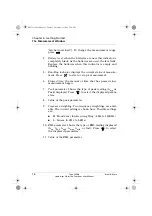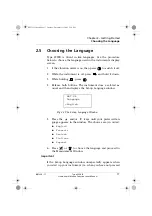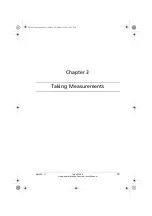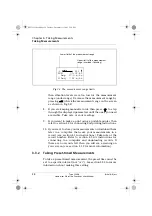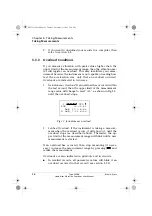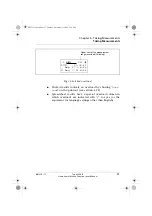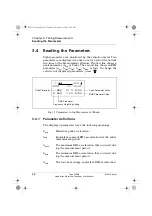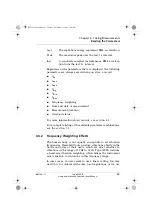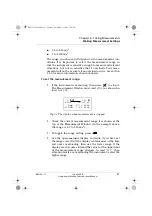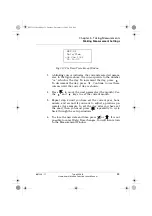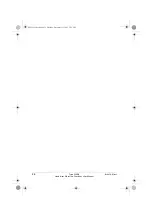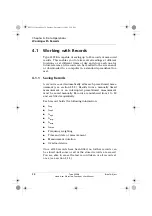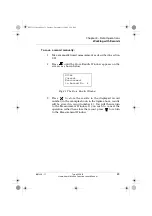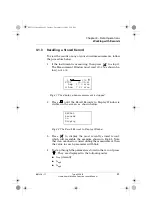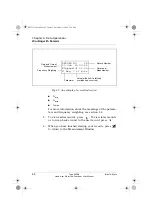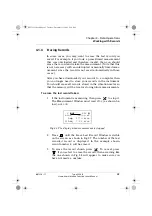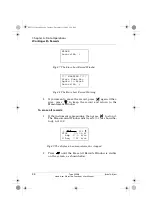
Chapter 3 – Taking Measurements
Making Measurement Settings
30
Brüel & Kjær
Type 2239 B
Hand-Arm Vibration Functions User Manual
in research literature (as a supplement). Type 2239B includes
a linear setting, which removes the hand-arm vibration filter.
When set to linear, the vibration meter is equally sensitive to
vibrations at all frequencies from 6.3 Hz to 5 kHz.
The frequency weighting can dramatically affect your results,
so it is important to be sure it is set correctly. Consult your
local authorities for regulations concerning which weighting
you should use. Refer to section 3.5.2 for instructions about
how to set the frequency weighting.
The following codes are displayed in the Measurement Window
to indicate the current frequency weighting (see Fig. 3.5):
●
H: Hand-arm vibration weighting (5 Hz to 1500 Hz)
●
L: Linear (6.3 Hz to 5 kHz)
3.5
Making Measurement Settings
Before you begin measuring, your vibration meter must be set
up correctly. Settings that affect measurements and records
are:
●
Measurement Range
●
Frequency Weighting
●
Preset Time
●
Date and Time
●
Calibration (see section 3.1)
This section explains how to make each of the above settings
(except calibration, which is described in section 3.1) and how
they will affect your measurements.
3.5.1
Setting the Measurement Range
The vibration meter is capable of measuring in either of the
following acceleration ranges:
bb122411.book Page 30 Tuesday, December 11, 2001 2:34 PM

